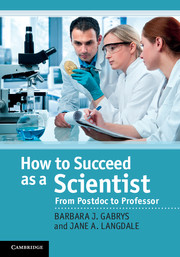20 - Managing stress
from Part III - Managing your career
Published online by Cambridge University Press: 05 November 2011
Summary
At the end of the day, your job doesn’t love you back and everyone needs to have a good work–life balance to provide perspective and maintain sanity. To achieve such a balance, mental, physical emotional and spiritual aspects of life all have to be recognised, evaluated and given time. An A–Z directory of ‘well-being’ advice is provided here for consideration in the context of your own lifestyle.
The theory
Everybody knows that, in order to live a healthy long life, a balanced diet and regular exercise (both physical and mental) are essential. This recognition goes back to antiquity; the maxim Mens sana in corpore sano (a sound mind in a sound body) has been a favourite of many different people and organisations. Whilst there is a wealth of medical research published in medical journals, and some results have made it to the popular press, it would be irresponsible of us to recommend any particular exercise regime or any particular diet above others. The reason is simple – both have to be considered in the context of everything else in an individual’s life. However, what is easily condoned is the idea that, to be in peak condition, you have to take time out of work on a regular basis – to look after your body and the mental, spiritual and emotional aspects of your mind. In effect, this is the best way to ensure that pressure (which can be motivating) does not become excessive and develop into stress.
The recreation and renewal of mind in order to be effective is acknowledged by Covey as the seventh habit of highly effective people (see Chapter 1). However, whereas Covey considers four distinct ways to refresh your mind – physical, mental, social/emotional and spiritual – we see them as interlinked. Moreover, there is no reason for classification – for some people baking a cake to share with others can be a spiritual activity whereas for others it is simply a gastronomic pleasure.
- Type
- Chapter
- Information
- How to Succeed as a ScientistFrom Postdoc to Professor, pp. 177 - 183Publisher: Cambridge University PressPrint publication year: 2011



